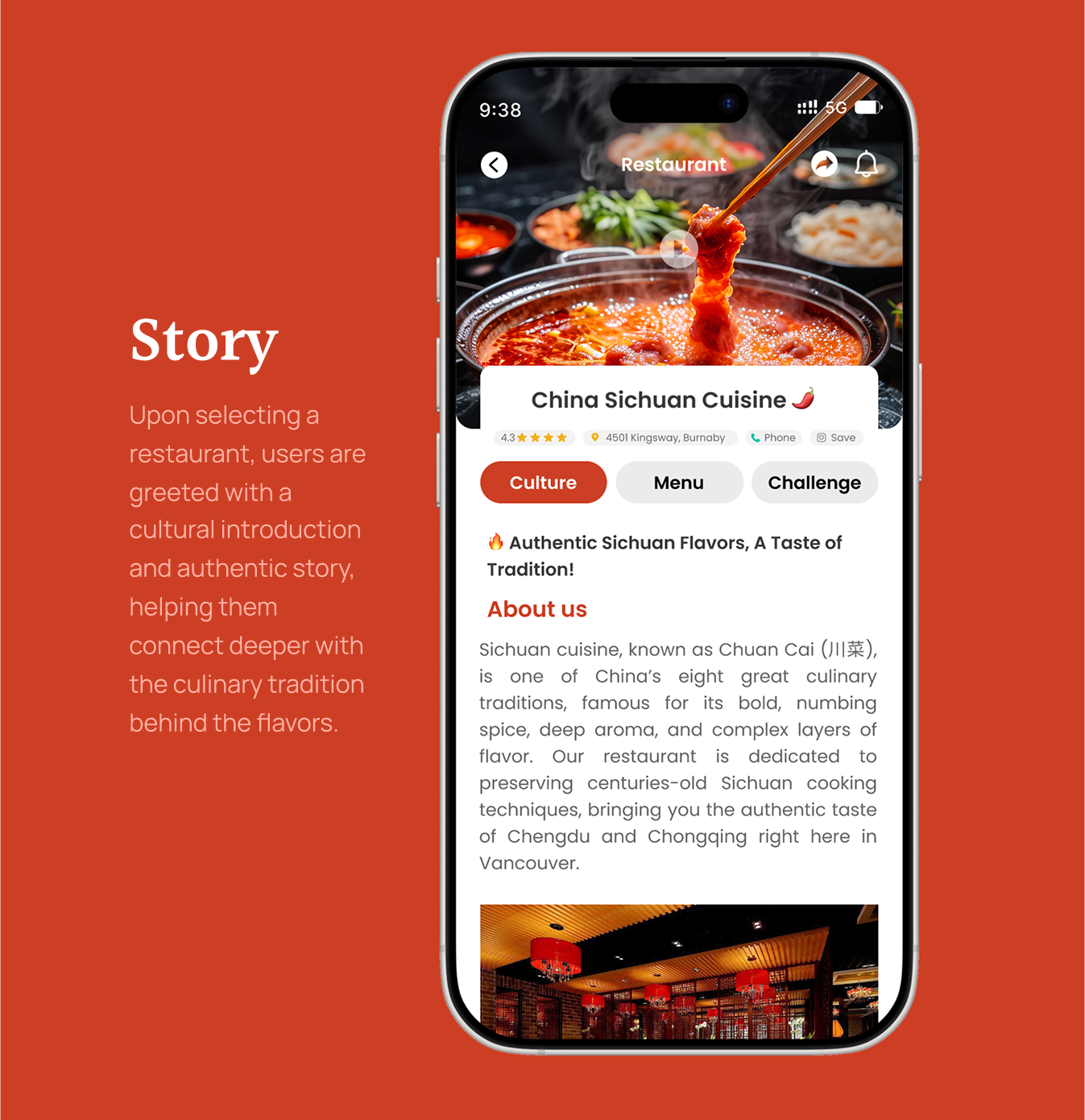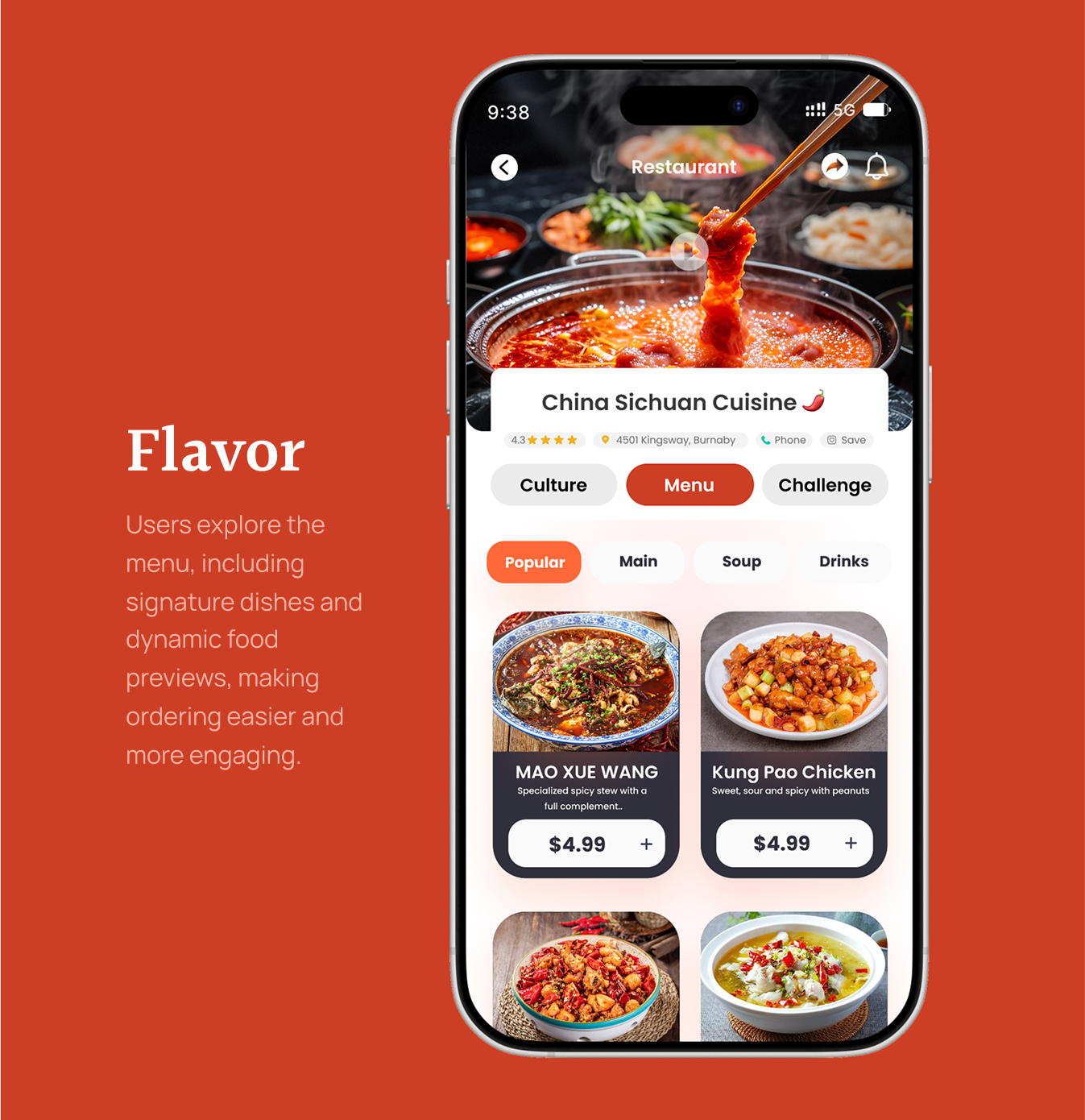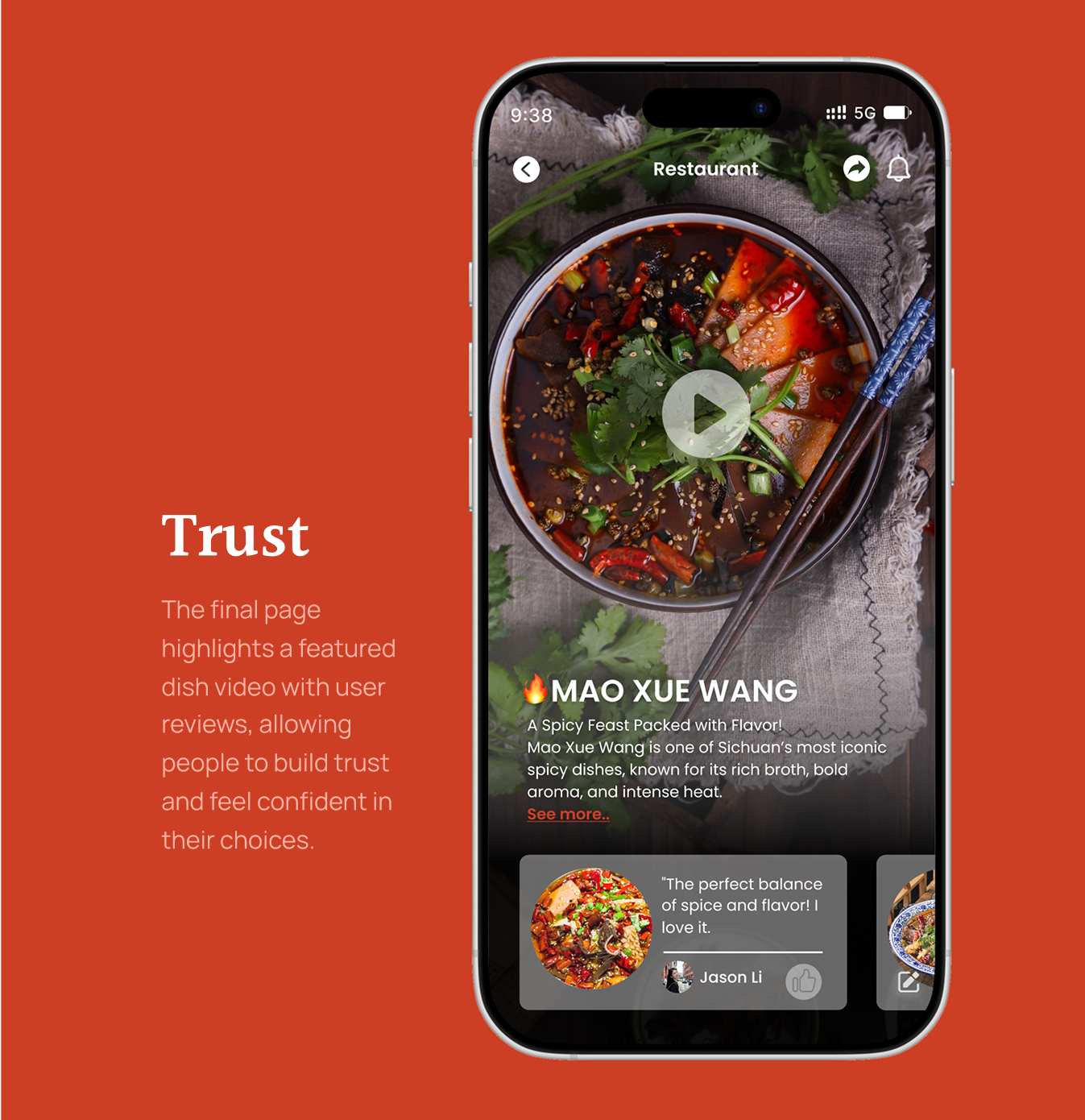Flavory-Discover Culture through food
AI-powered food exploration, personalized for taste and trust.
Project Overview
Flavory is a food discovery app that helps people find real, authentic cultural dishes — not just what’s popular. It combines trusted recommendations from real people with AI-powered suggestions based on your taste. It’s not just about food — it’s about culture, explore, and connection.
My Role
UX Researcher
UX Designer
Web Designer
Time
2025
Tools
Figma
Photoshop
Research Tools
Deliverables
MVP Prototype
User Testing Report
Case Study
“How can we make food discovery more trustworthy, personal,
and culturally meaningful?”
Process & Methodology
-Existing apps rely heavily on ratings, which often fail to reflect cultural authenticity
-Users struggle to distinguish real local gems from touristy places
-Reviews tend to be too generic and not culturally informative
Research Methods
To better understand user behavior and pain points, I created a Google Form survey and distributed it to local food lovers, students, and newcomers. The survey collected 14 responses, focusing on users’ restaurant discovery habits, trust in review platforms, and expectations around cultural food experiences.
Watch the screen recording for survey design and a quick overview of the results.
persona
Personas helped me understand how different users discover and trust cultural food. Both of them are looking for food experience they can trust, enjoy easily, and connect with on a personal level.
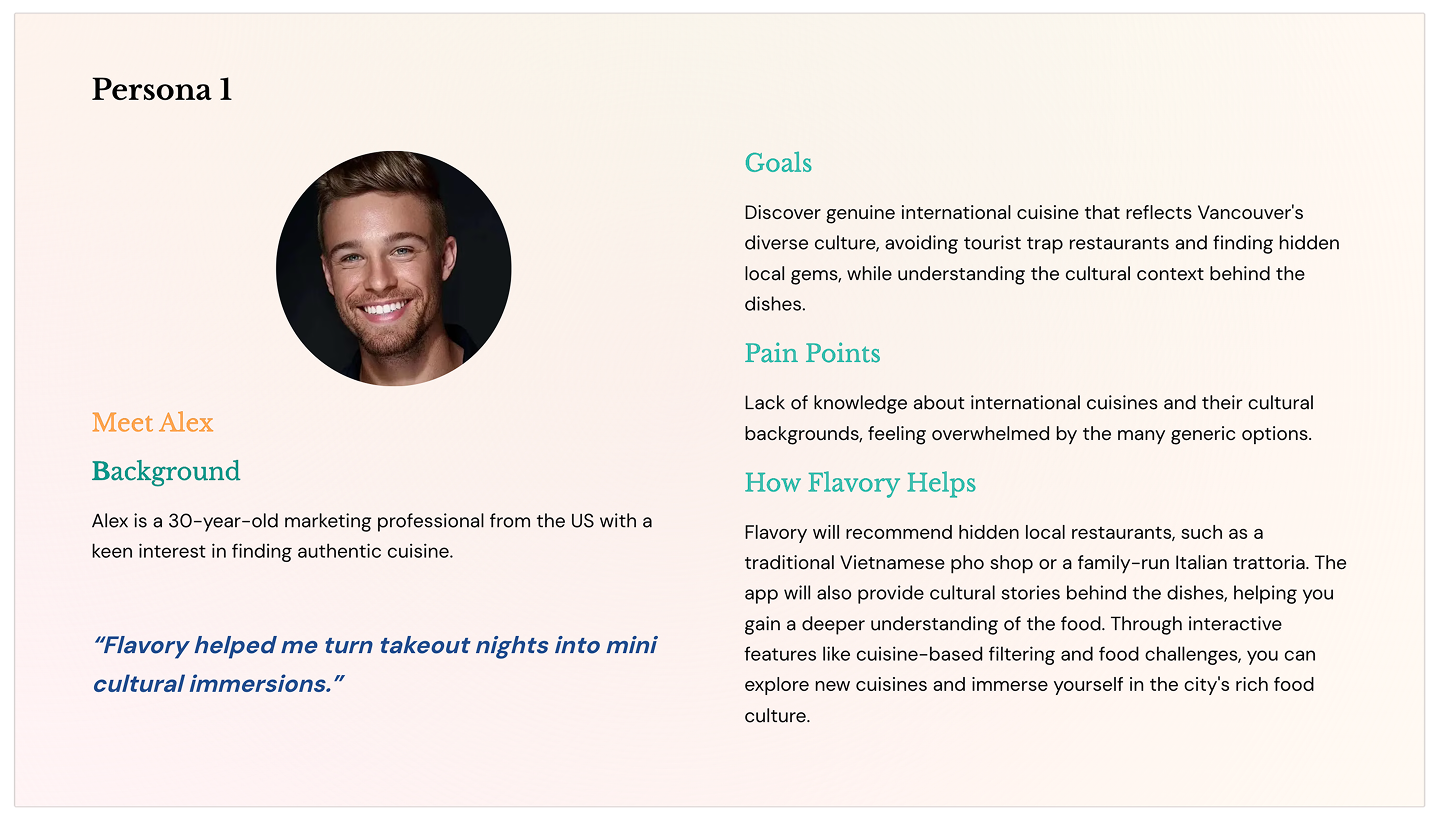
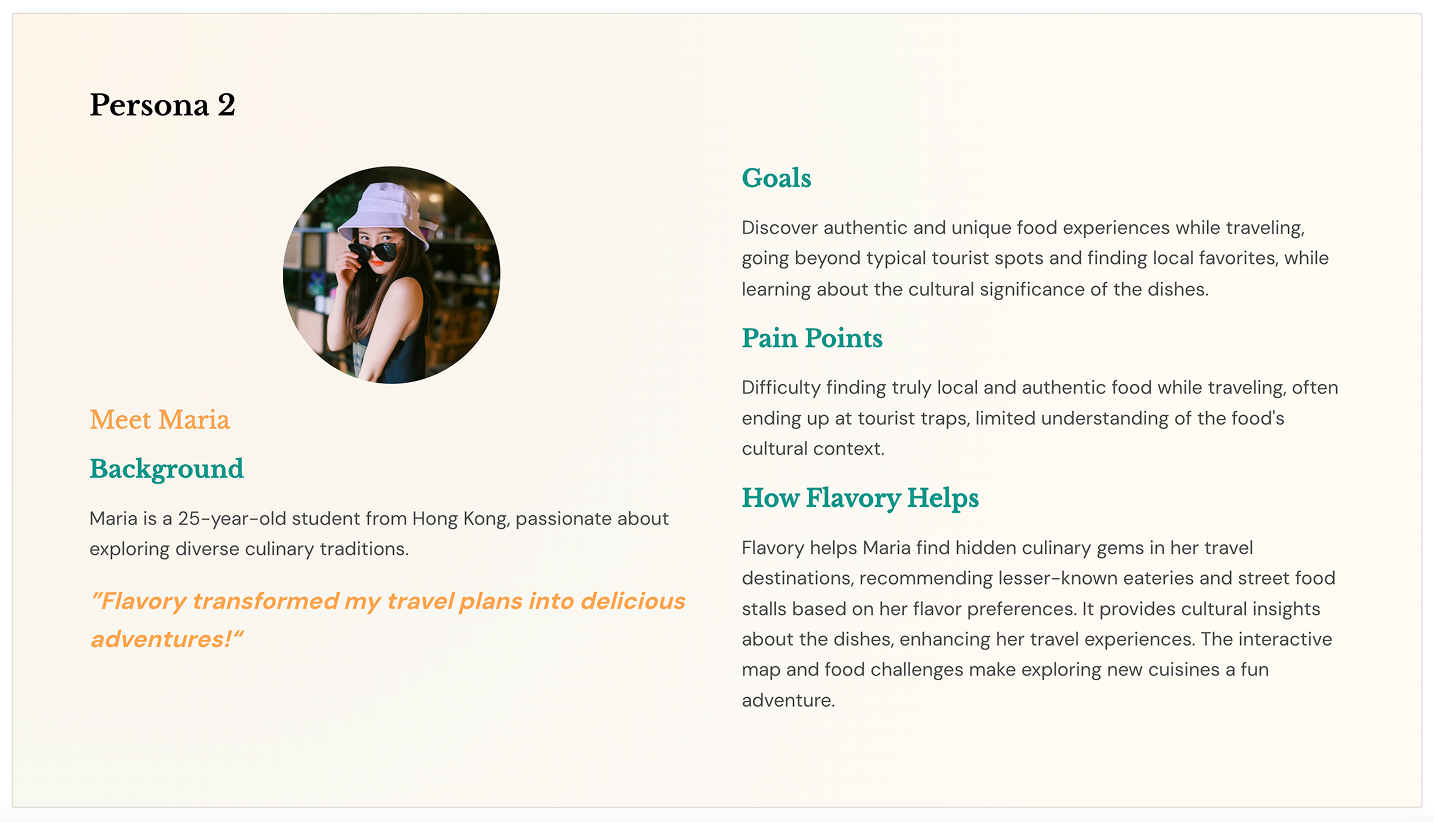
Final Findings and Actionable Steps from Serveys
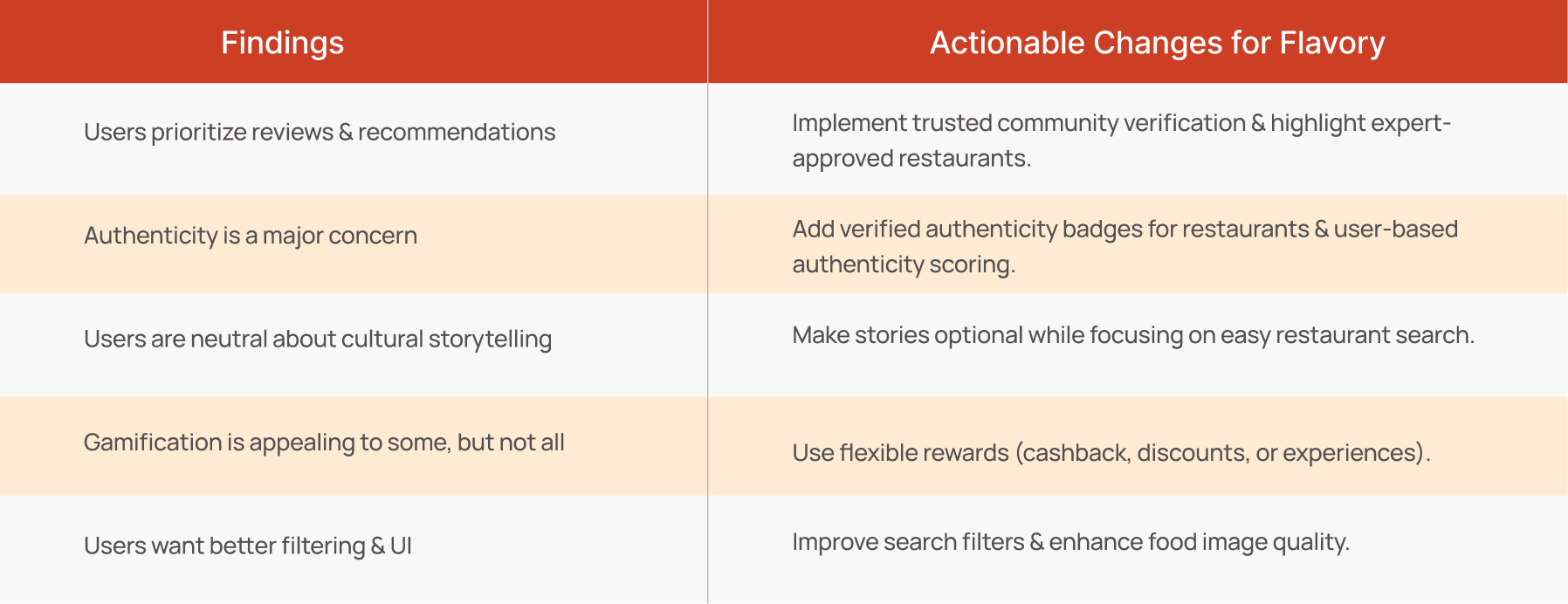
Competitive Analysis
To identify design opportunities, I compared three popular food and restaurant platforms.
Yelp
✅ Strengths: Massive review base, location-based filtering.
⚠ Weakness: Lacks cultural storytelling, overwhelming layout.
Google Maps
✅ Strengths: Easy access to nearby restaurants with reviews, location, and contact info.
⚠ Weakness: No taste-based or cultural exploration tools.
Red Notes
✅ Strengths: Active user posts, popular in Chinese foodie communities.
⚠ Weaknesses: Not restaurant-focused, less useful for non-Chinese users.
Key Findings & Insights from Research
- 70% of users rely on word-of-mouth or local friends for authentic food.
- Users find Yelp reviews too generic and often misleading.
- Most users don’t care about stars—they want real stories.
- Authenticity is valued over popularity.
- People love challenges and stories when eating out.
- Visual and social proof (videos, friends' recommendations) increase trust.
MVP Concept & impact
(features)
-Discover verified authentic restaurants through community reviews.
-Receive AI-powered personalized recommendations based on flavor preferences.
-Engage socially by following food journeys from friends and experts.
-Earn incentives through user participation and verified contributions.
strategy
To design an engaging and purposeful food discovery experience, Flavory’s product strategy focuses on three key points: Explore, Engage, and Earn.
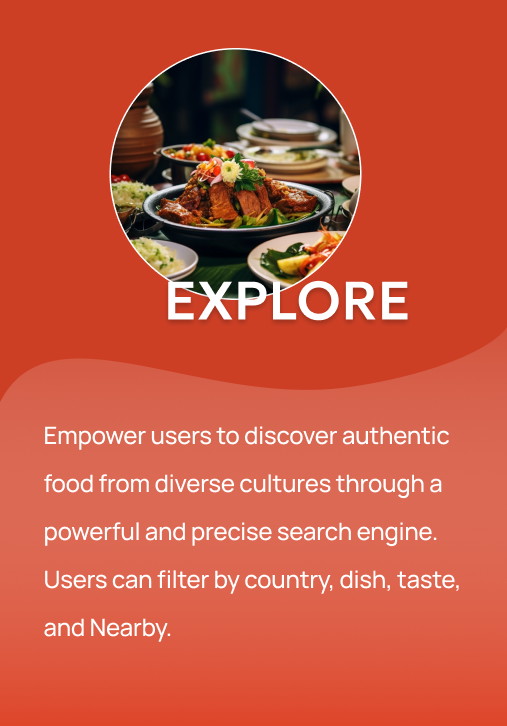
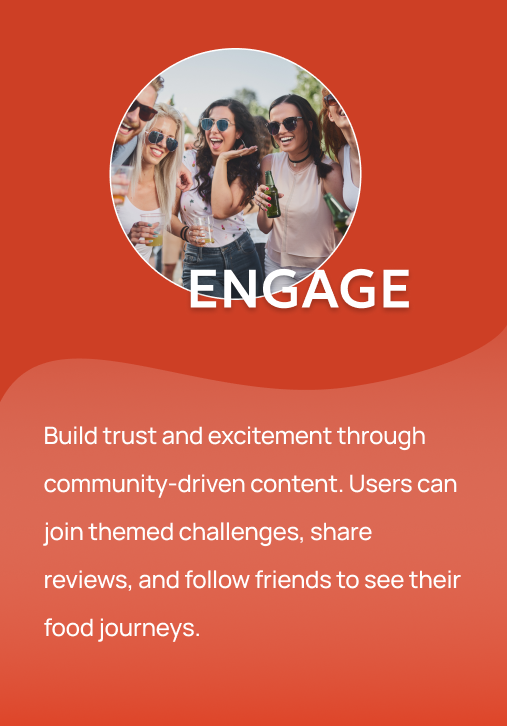
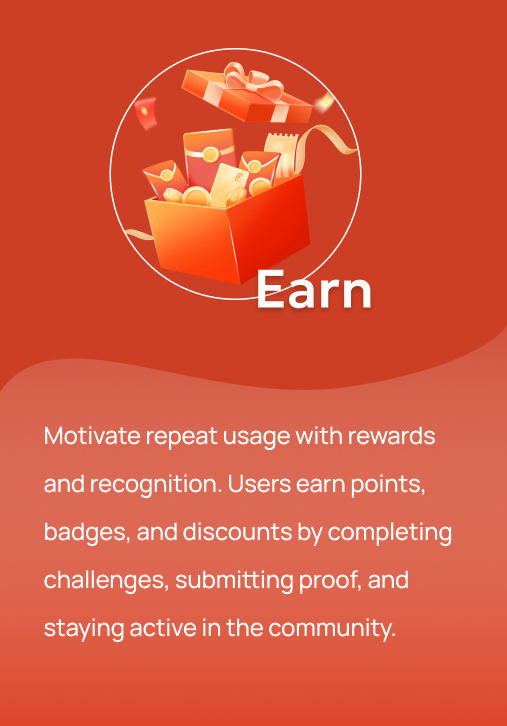
Prototyping & Testing
Prototyping:I created an interactive draft to visualize how the app works and feels. Testing:I gathered feedback from users to improve the design and fix usability issues.
User flow
Map out the steps users take in the app, so everything feels smooth and easy to follow.
User Journey Map
Help me understand what users feel and need at each stage, so I could improve their overall experience.
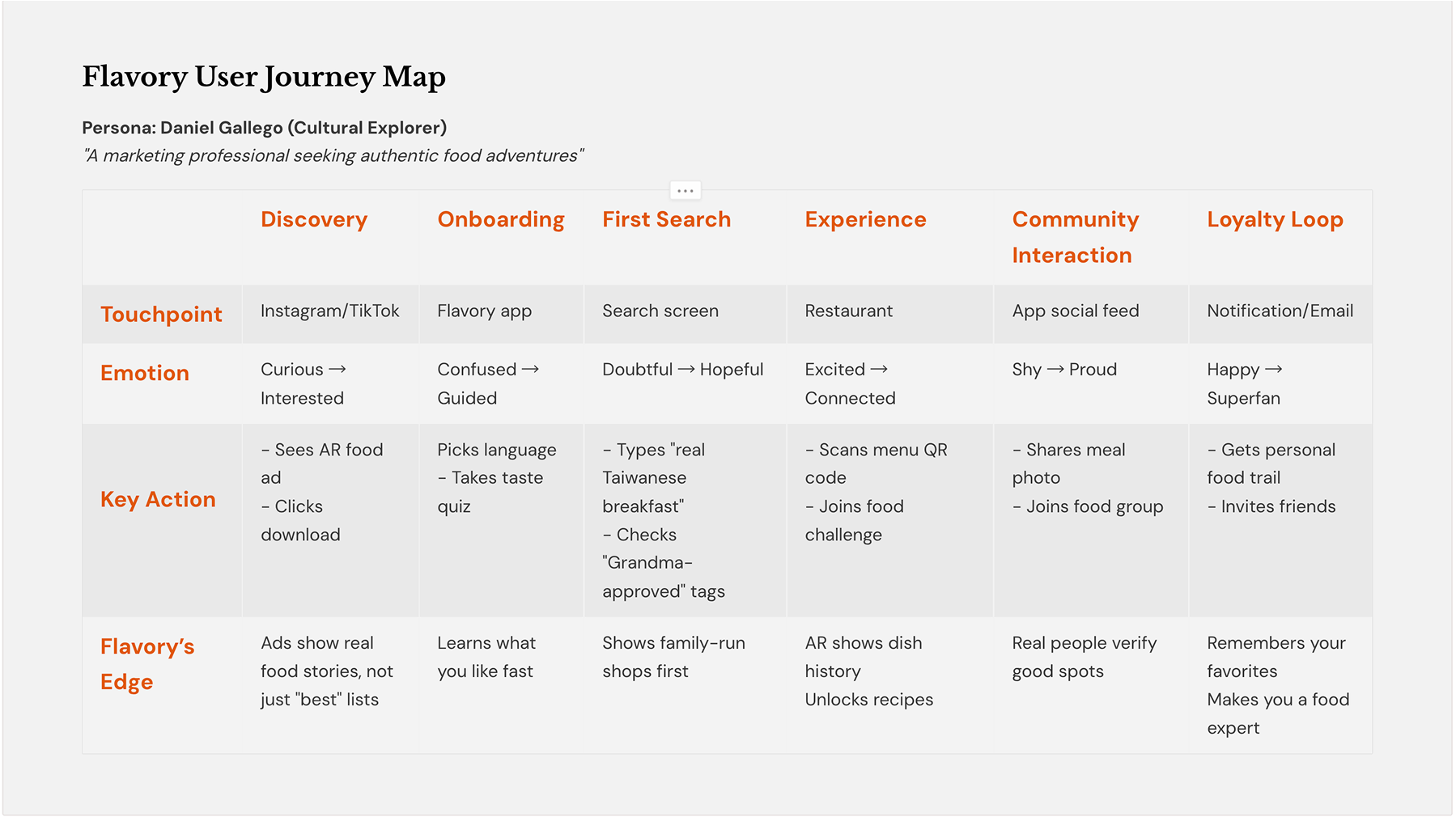
Low-Fidelity Wireframes
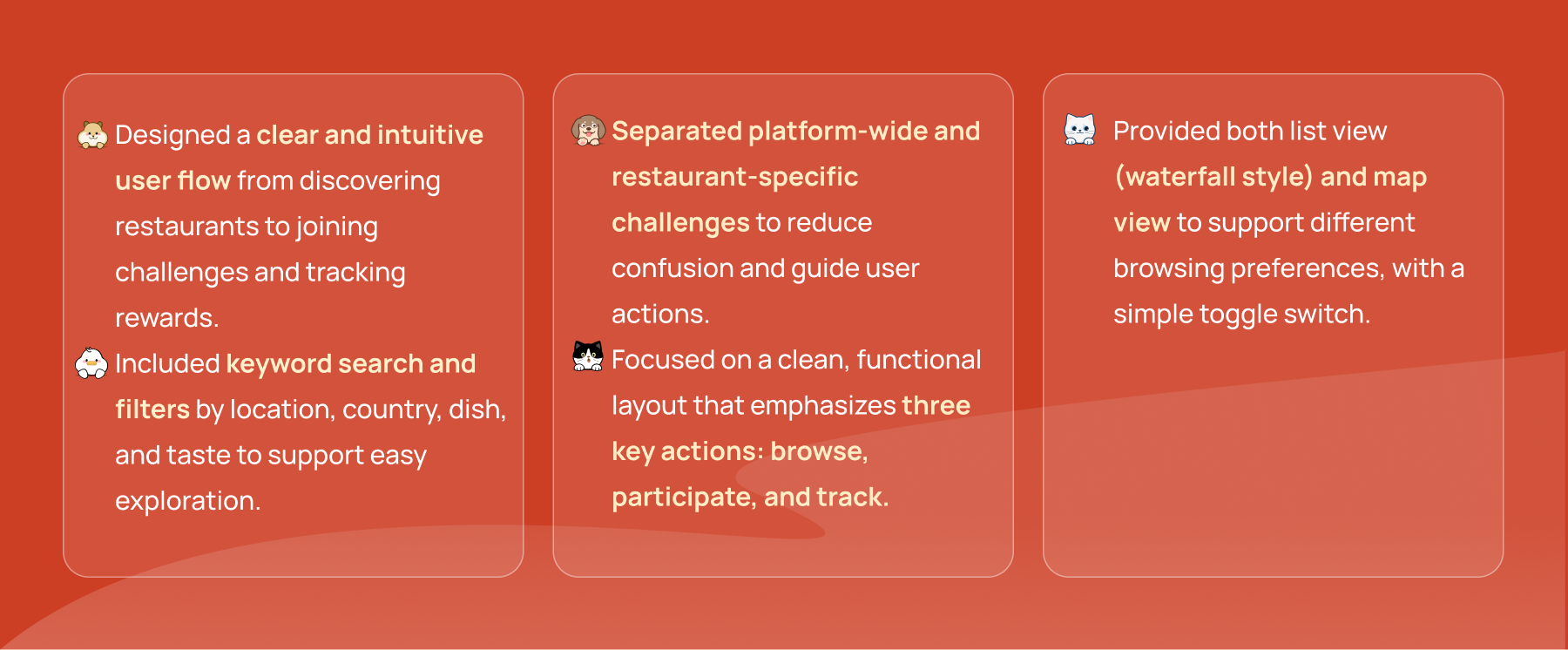
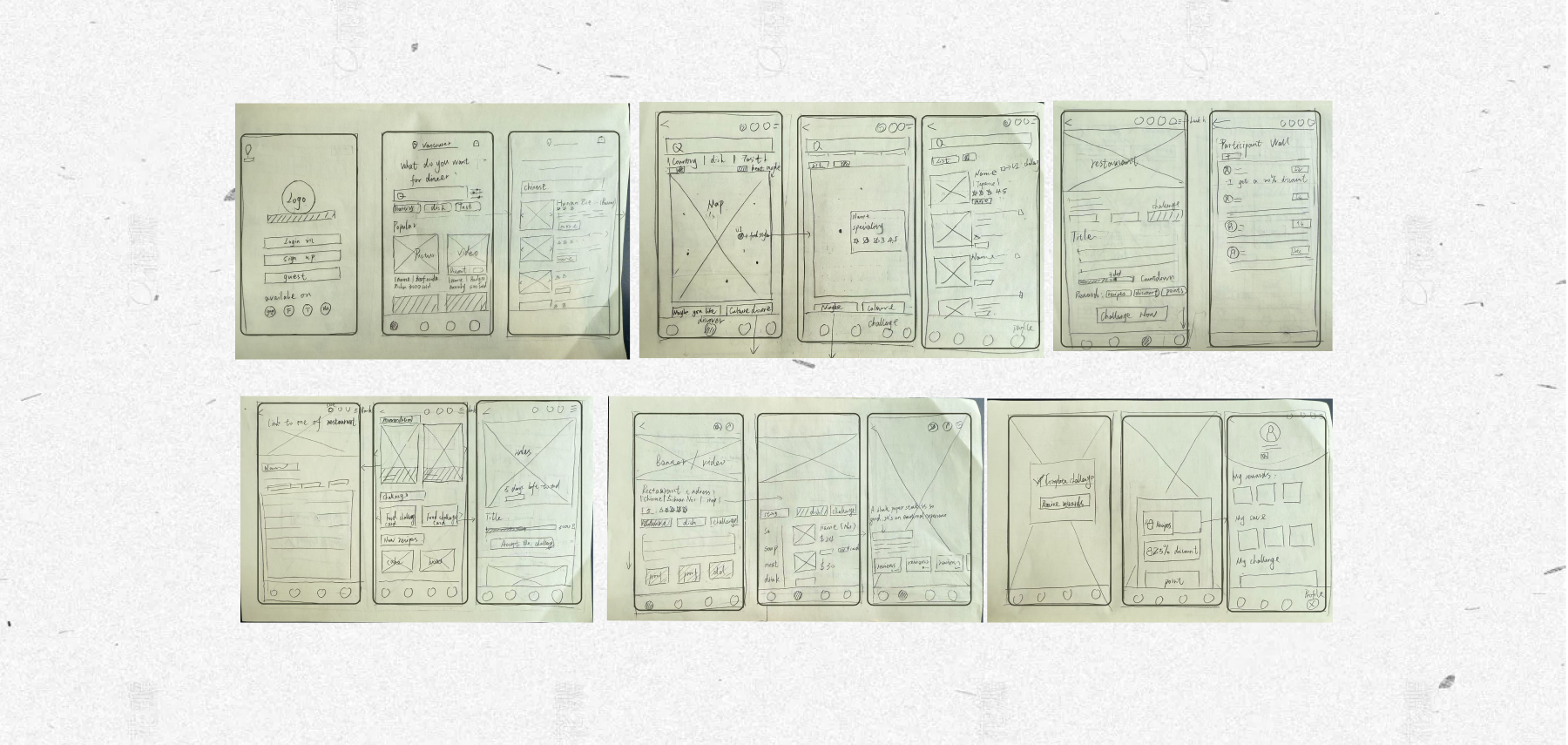
High-Fidelity MVP Prototype
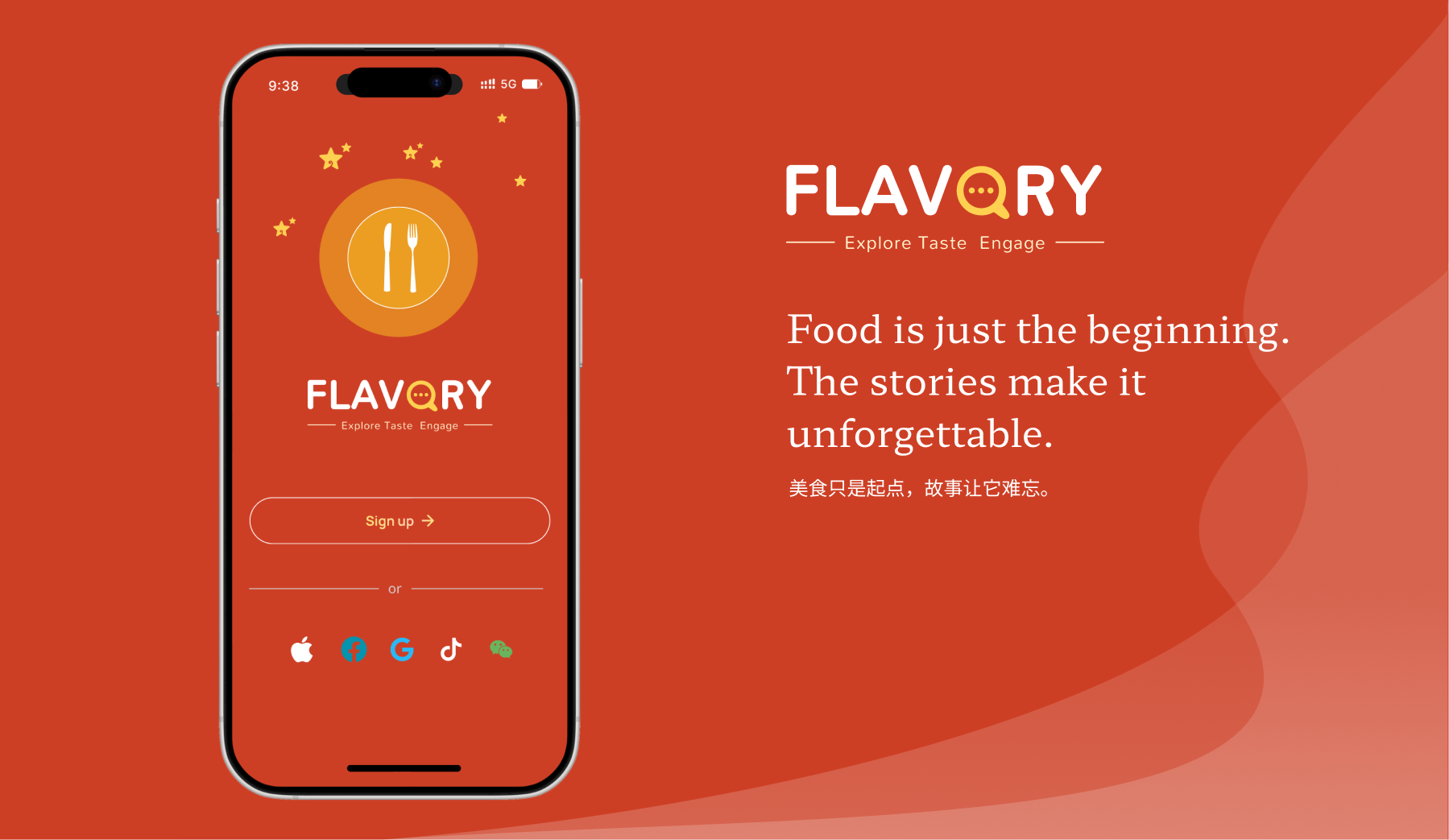
Key Insights
- Users wanted better and more relevant suggestions
- → So I added AI-based personalization to match their taste.
- Users cared more about trust than just playing challenges
- → So I focused on authenticity and real user reviews instead of gamified features.
Flavory App Video
Explore cultural cuisine through personalized search, authentic restaurant profiles, and a social-driven reward system. This short demo highlights how users discover food in a meaningful, trusted way.
Challenges & solutions
👁️ 1. Building Cultural Trust
People weren’t sure which restaurants were truly authentic. Star ratings didn’t help much — they felt vague or even misleading.
Solution: I added trusted reviews from real users and experts, and used short cultural stories on restaurant pages to help people feel more confident.
🧭 3. Keeping Exploration Simple
While users liked flavor-based and cultural discovery, too many filters and info made them feel overwhelmed.
Solution: I made the search easier with simple filters (like taste, dish, country) and used short stories and image-based layouts to guide them.
🪄 What I Learned
Through this project, I learned how important it is to truly understand user needs before designing solutions. At first, I focused more on features, but after doing user research and testing, I realized:
- Trust and authenticity matter more than flashy functions.
- Simple, intuitive flows make a big difference in usability.
- People enjoy apps that feel personal and social, not just informative.
Design is not just about visuals — it’s about solving real problems. Listening to feedback helped me improve the app in meaningful ways.
“Flavory doesn’t just recommend food — it connects people through stories, flavors, and shared experiences.”

